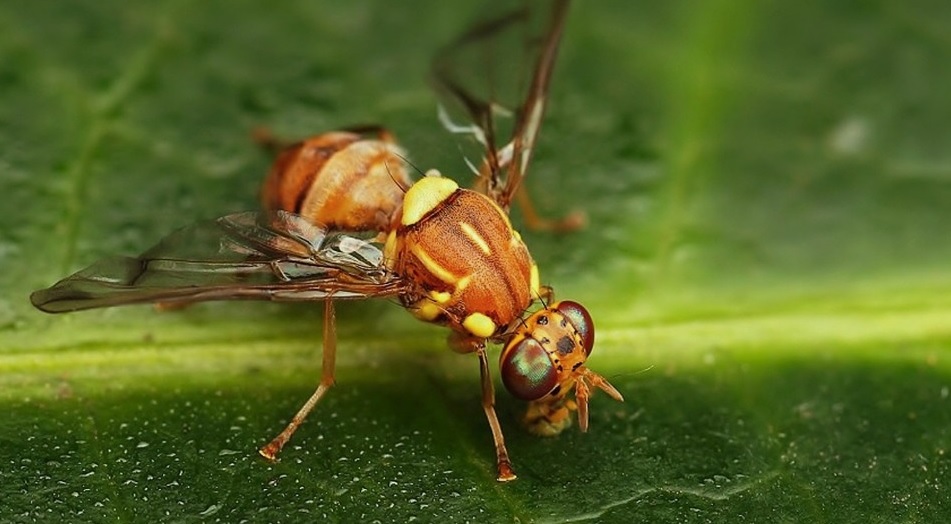Catalogue of traps and pheromones
Download traps and pheromones list

Download document
1.02 mb
Distribution:
Asia: Afghanistan, Bangladesh, Bhutan, Brunei Darussalam, Cambodia, China, India, Indonesia, Iran, Laos, Malaysia, Myanmar, Nepal, Oman, Christmas island, Pakistan, Philippines, Saudi Arabia, Singapore, Sri Lanka, Taiwan, Thailand, United Arab Emirates.
America: USA (Hawaii). Africa: Benin, Burkina Faso, Cameroon, Democratic Republic Of The Congo, Gambia, Guinea, Cotd’Ivory coast, Kenya, Mali, Mauritius, Niger, Nigeria, reunion, Senegal, Seychelles, Somalia, Sudan, Tanzania, Togo, Uganda. Oceania: Australia (Queensland), GUAM, Kiribati, Nauru, Northern Mariana Islands, Papua new Guinea, Solomon Islands.

Damaged plants: about 125 species, primarily the Pumpkin family, such as melon, giant pumpkin, common pumpkin, watermelon, cucumber, as well as citrus, papaya, mango and others. Symptoms of damage: punctures in the places of egg laying on damaged fruits, deformation and rotting of fruits.
Development period from egg to adult ranges from 12 to 28 days. The female may lay as many as 1,000 eggs. Eggs are generally laid in young fruit 2-4mm deep, but are also laid in the succulent stems of host plants. The eggs are deposited in cavities created by the female using its sharp ovipositor (The ovipositor is a tube-like organ used by insects for the laying of eggs.). Pupation usually occurs in the soil. There may be as many as 8 to 10 generations a year.

Melon flies are most often found on low, leafy, succulent vegetation near cultivated areas. In hot weather they rest on the undersides of leaves and in shady areas. They are strong fliers and usually fly in the mornings and afternoons. They feed on the juices of decaying fruit, nectar, bird feces, and plant sap.
Proper use of Pheromone Traps:
The pheromone trap is designed to monitor and reduce pest numbers. In order to determine the population density of pest insects and to identify pest outbreaks (monitoring), it is recommended to use 1 trap per 1 ha.
The trap should be placed as near the culture at the middle of the plant. Prior to the first flight of the flies, the traps must be checked on a daily basis, and after the first flieshave been captured, the traps must be checked every 5-7 days. Pheromone dispensers can be changed after 4-6 weeks and sticky tapes can be replaced when is full with pests and dust. Protective measures are based on the results of the monitoring of population density of pest insects.
Trap placement:
For mass capture and sterilization of males, it is recommended to have more than 20 traps per hectare in opened field. In case of a large number of pest insects use 30 traps per 1 ha in opened field. In greenhouses it is recommended to have more than 15 traps per hectare. In case of a large number of pest insects use 20 traps per 1 ha.


Download traps and pheromones list

1.02 mb
Review our catalogue of pheromons and semiochemicals by chemical name

525.1 kb